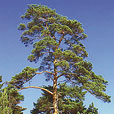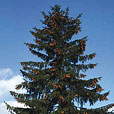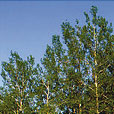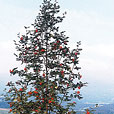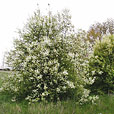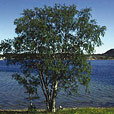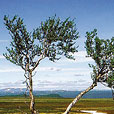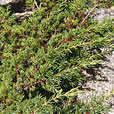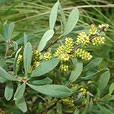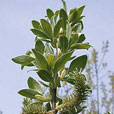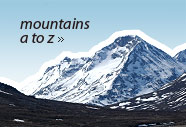Scandinavian Mountains over 2000 metres - James Baxter
Flora & Fauna › Trees & Shrubs
The Scandinavian massifs are often surrounded by deep valleys. It is only in these valleys that any trees are found. From these main valley systems there are numerous side valleys. These side valleys are virtually devoid of trees but have a rich covering of scrub.
Valleys often start at the fjords and are initially agricultural. As these deep chasms slice into the mountainous massif the permanent agriculture gives way to pastures used for summer grazing only. Eventually these pastures peter out. Surrounding the agricultural fields and summer pastures are locally managed forests with some naturalized tree speices like Norway spruce. These forests have provided building materials and fuel for centuries.
Above these summer pastures and on the steep and unsuitable slopes around them, like the valley sides, the original woodlands persist. These woodlands are dominated by Scots pine and downy birch with other speices mixed in, especially along stream sides. Around 600m altitude these forests give way to the mountain birch woods which grow up to 800m. These limits are largely theoretical as the south facing tree lines can be 300m higher than the north facing ones. Above the mountain birch woods are the scrub areas.
The scrub looks the same and is tedious to walk through if there is no path. However, the scrub contains numerous varieties of willow, and also dwarf birch and juniper. In the summer, once the melting snows have exposed these scrub areas, it bursts into life and the young leaves and catkins support a huge quantity and variety of insects. They feed off the plants for nearly 24 hours of productive sunlight and in turn sustain the large numbers of migratory Passerines who come to feed off them.
The identification of the willows is a difficult task at any time of year and it is only slightly easier when the catkins are present. If this was not difficult enough, willows are very promiscuous and regularly cross with each other to produce hybrids.
Click below to view details of trees & shrubs.

